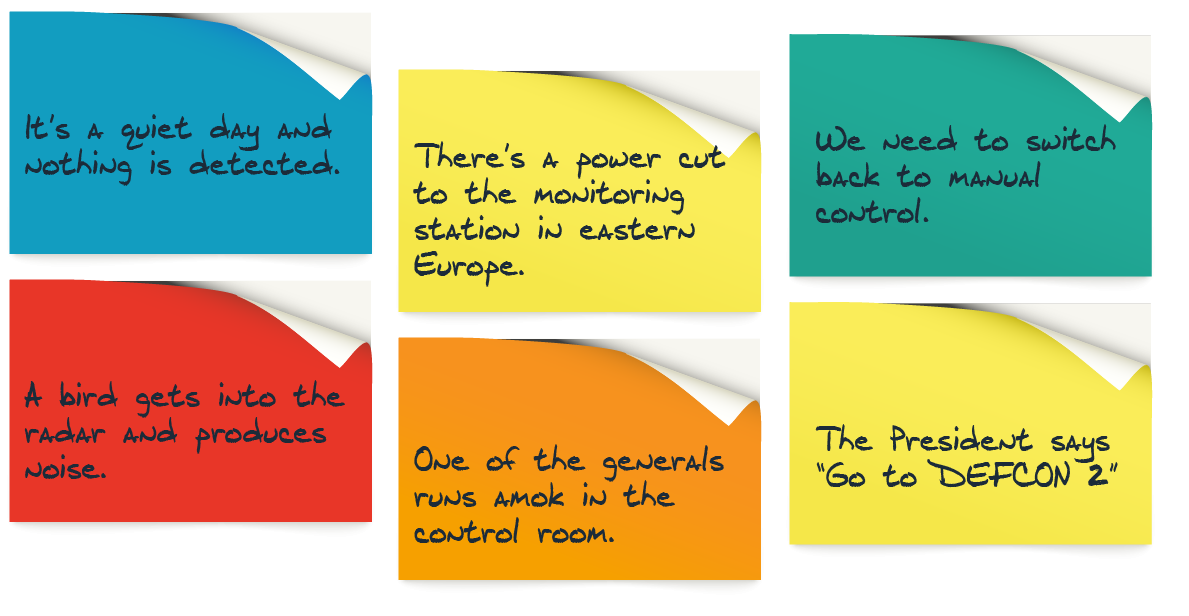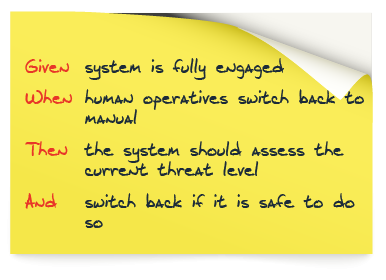It is 1995 and Cyberdyne Systems are on the verge of launching their new automated military artificial intelligence software, CloudNet.
“Come with me if you want to live!” cries Ant Schwarter, the enthusiastic Scrum Master, as he ushers the development team at Cyberdyne Systems into the conference room.
Ant has been sent back in time from 2029, by the leaders of the human resistance, to save the human race from Judgement Day. Ant is no killing machine with a powerful exoskeleton, instead he has been skilled with humanity’s most powerful competitive advantage - business agility effected through behaviour driven development.
“We’ve been struggling with re-work over the last three months”, explains Dyson – lead engineer on the CloudNet product. “The military say that it’s critical for maps in the war room to centre on Washington, not Greenwich. And all of the ‘fire missile’ buttons are the wrong colour. With current ways of working, we’ll never review, deliver and deploy on time.”
“Glad you brought that up,” says Ant. “I’ve observed a disconnect between stakeholders from the Pentagon and the engineers building the system. I’d like to show you a new technique called Behaviour Driven Development (BDD), which can help us explore how software will behave BEFORE it’s built”.
The door flies open and half a dozen men breeze in, medals gleaming on their immaculate dress uniforms. “I’ve invited the command and control team from the Digital Defence Network to our product backlog refinement session.” Ant adds.
As they get down to work, Dyson introduces the first backlog item:

Everyone agrees that this is a valuable feature, and that they’d all feel safer knowing that it was in place.
“First, we need a list of all the scenarios that CloudNet (the product) might encounter. Then we can discuss how the system should behave in those scenarios” explains Ant. Everyone starts scribbling on post-it notes, and eventually the list is organised and de-duplicated:

Ant leads the team to decide how the system should behave in each of these scenarios by breaking them down into their preconditions, the action that occurs and how the system should respond. Each scenario is an opportunity to expose assumptions and make decisions. Ant uses ‘We need to switch back to manual control’ as the first scenario.

“Wait a minute” says General Buck Turgidson… “Who should have the final say over what is safe? Man… or machine?”
“I just assumed you wanted the artificial intelligence to be the ultimate failsafe” says Dyson, biting his pen and gazing quizzically at a children’s playground across the road…
(Note from the author: all names and references are fictional and any resemblance to persons, living or dead and/or incidents portrayed in this article are fictitious. No identification with actual persons, places, buildings, and products is intended or should be inferred  )
)
 Author: Duncan Evans, Director of Training, Agility in Mind
Author: Duncan Evans, Director of Training, Agility in Mind
Duncan is an experienced Agile project manager and Scrum Master with a proven track record for delivering high quality products. As Director of Training at Agility in Mind he is now using these skills to help customers build better products as a consultant, coach and trainer. While working as a project manager his focus was to ensure relevant, valuable products were developed by facilitating pragmatic decision making at regular intervals. Keeping the needs of the business at the heart of his approach, he has used Scrum and a range of complimentary practices to support the delivery of major products in high profile organisations.
Duncan is a Certified Scrum Professional, Professional Scrum Trainer and Agile Coach with experience in agile transitions, project inceptions and recruiting successful teams. He trained in agile with an outstanding delivery team at the BBC then gained commercial experience at ASOS and Pearson.
Clients and work include:
- Planned and delivered an agile transformation at Sainsbury's on behalf of Salmon, training two teams in the Scrum framework then coaching the teams and stakeholders through their first product development
- Coached two Scrum teams at Travel Councillors in their approach and refreshed their understanding of how to use Scrum to gain a competitive advantage
- Delivering agile training courses for clients including BBC, English Heritage and Sainsbury's
- Interim scrum master for Which?, helping them to deliver key project and to recruit for permanent roles
- Trained circa 300 people through Oracle University across their EMEA region